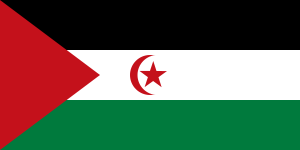Tanga, Tanzania
| Tanga | |
|---|---|
| City | |
|
Aerial view | |
_location_map.svg.png) Location in Tanzania (dark green) | |
| Country | Tanzania |
| Zone | Northern |
| Region | Tanga |
| Incorporated Town | 18911 |
| Incorporated City | 1 July 2005 |
| Government | |
| • Type | City Council |
| • Mayor | Omari Guledi |
| Area | |
| • Total | 536 km2 (207 sq mi) |
| Population (2012) | |
| • Total | 273,332 |
| • Density | 510/km2 (1,300/sq mi) |
| Time zone | EAT (UTC+3) |
| Postcode | 211xx |
| Area code(s) | 027 |
| Website |
tanga |
| 1The Germans designated Tanga into a township after taking control of the coastal area from the Sultan of Zanzibar in April 1891 | |

Tanga is both the name of the most northerly seaport city of Tanzania, and the surrounding Tanga Region. It is the Regional Headquarters of the region. With a population of 243,580 in 2002, Tanga is one of the largest cities in the country. It is a quiet city compared to, for example, Arusha or Moshi with a comparable number of inhabitants.
The city of Tanga sits on the Indian Ocean, near the border with Kenya. Major exports from the port of Tanga include sisal, coffee, tea, and cotton. Tanga is also an important railroad terminus, connecting much of the northern Tanzanian interior with the sea. Via the Tanzania Railways Corporation's Link Line and Central Line, Tanga is linked to the African Great Lakes region and the Tanzanian economic capital of Dar es Salaam. The city is served by Tanga Airport.
The harbour and surrounding is the centre of life in Tanga. It is stretched out several km² into the country. It has several markets in several neighbourhoods.
History

Tanga was chosen in 1889 as a military post of German East Africa, and it became a district office in 1891. The local economy was based mainly on the production of sisal, which had been brought to the colony several years earlier, and population in the area grew rapidly. The town was also the terminus of the Usambara Railway line, which runs inland to Moshi at the foot of Kilimanjaro.
The name Tanga comes from the word for farm or cultivated land in several of the local languages (including Sambaa,Diggo, Bondei, and Zigua). Tanga gave its name to Tanganyika, literally meaning "Sisal Farm", the territory which in 1964 joined with the island of Zanzibar to form the modern nation of Tanzania.
As the coastal town closest to Kenya, Tanga was on the front line at the outset of World War I. A British landing was thrown back on 4 November 1914 in the Battle of Tanga, and the town was not taken until 7 July 1916.
Economy
Tanga Cement is one of the major industries.
Transport
Tanga was served by a 1,000 mm (3 ft 3 3⁄8 in) metre gauge railway of the national railway system, however this has not functioned in many years.
Healthcare
Tanga area medical institutions include:
- Bombo Regional Hospital
- National Institute of Medical Research Centre, Tanga
- Amani Biomedical Research Laboratory
- Tanga AIDS Working Group
Tourist sites
Nearby tourist attractions include Amboni Caves, Galanos hot springs, Saadani national park, Toten Island, URITHI Tanga Museum, Tanga War Graves and Memorials, Tongoni Ruins, Ndumi Village defense works, Mwarongo sand beaches and protected coastal mangroves.
Sports
Tanga is represented in the Tanzanian Premier League by football clubs Coastal Union and JKT Mgambo.
Twin cities
 Eckernförde, Germany (since 1963)
Eckernförde, Germany (since 1963) Kemi, Finland (since 2007)
Kemi, Finland (since 2007) Tifariti, Sahrawi Arab Democratic Republic
Tifariti, Sahrawi Arab Democratic Republic Toledo, USA (since August 28, 2001)
Toledo, USA (since August 28, 2001) Weihai, China
Weihai, China
References
- Byron Farwell, The Great War in Africa, 1914-1918 (W. W. Norton, 1986)
External links
| ||||||